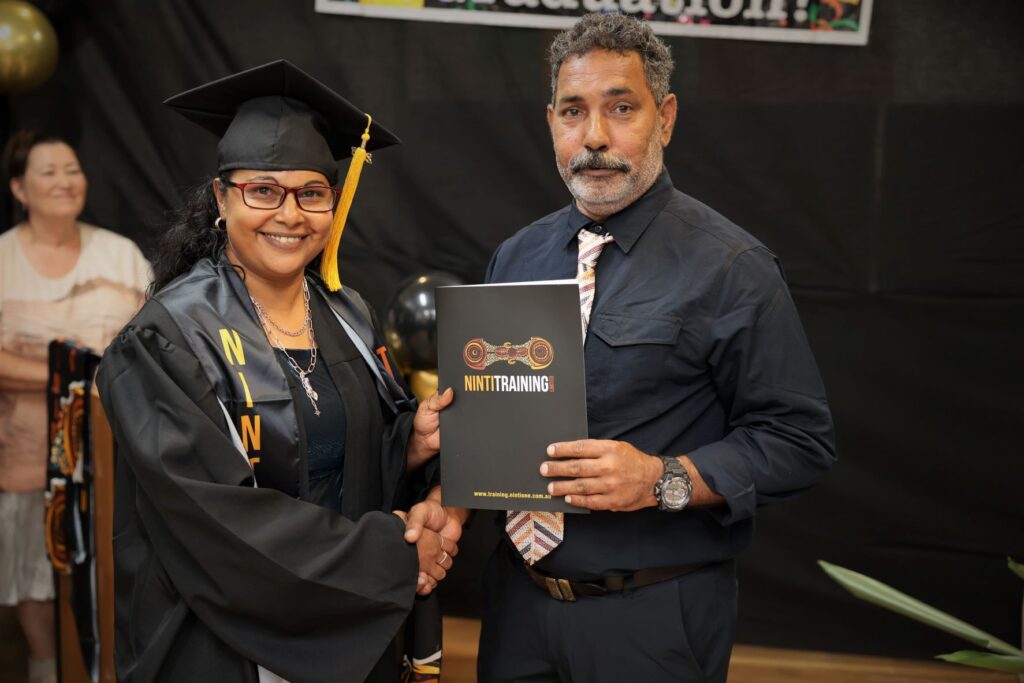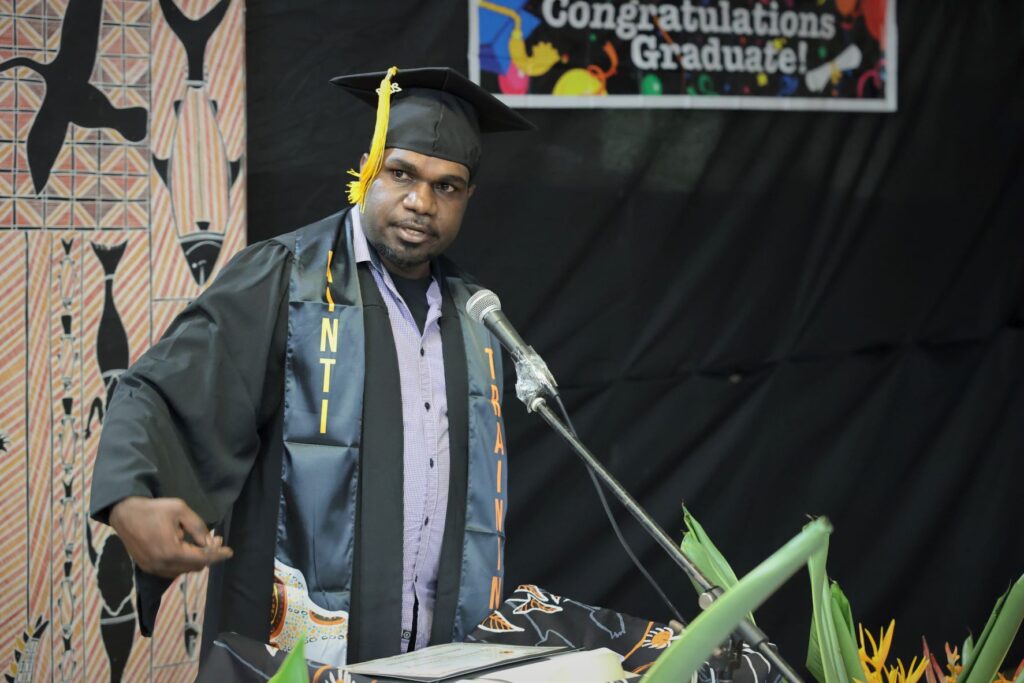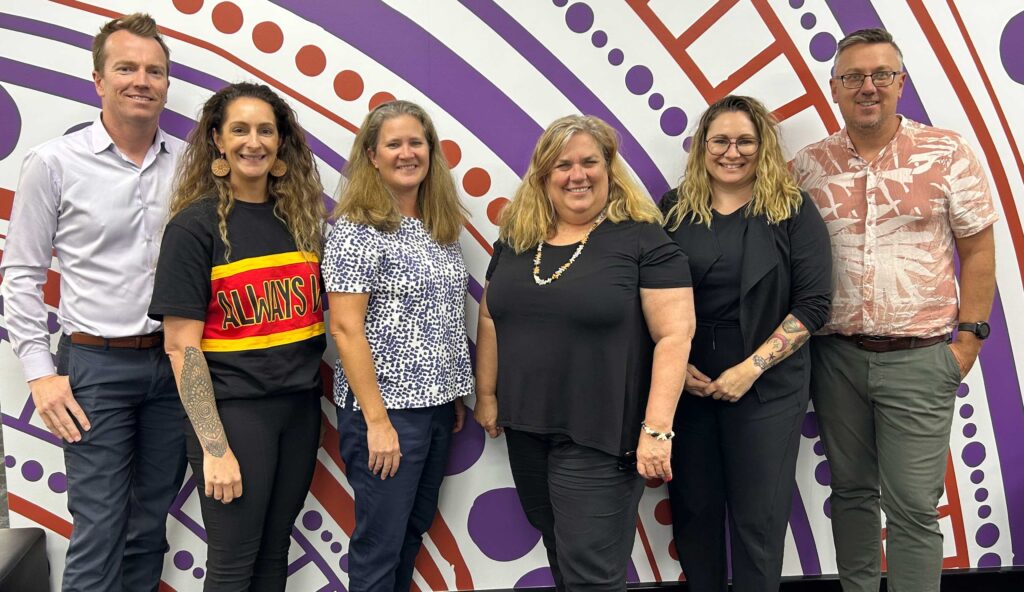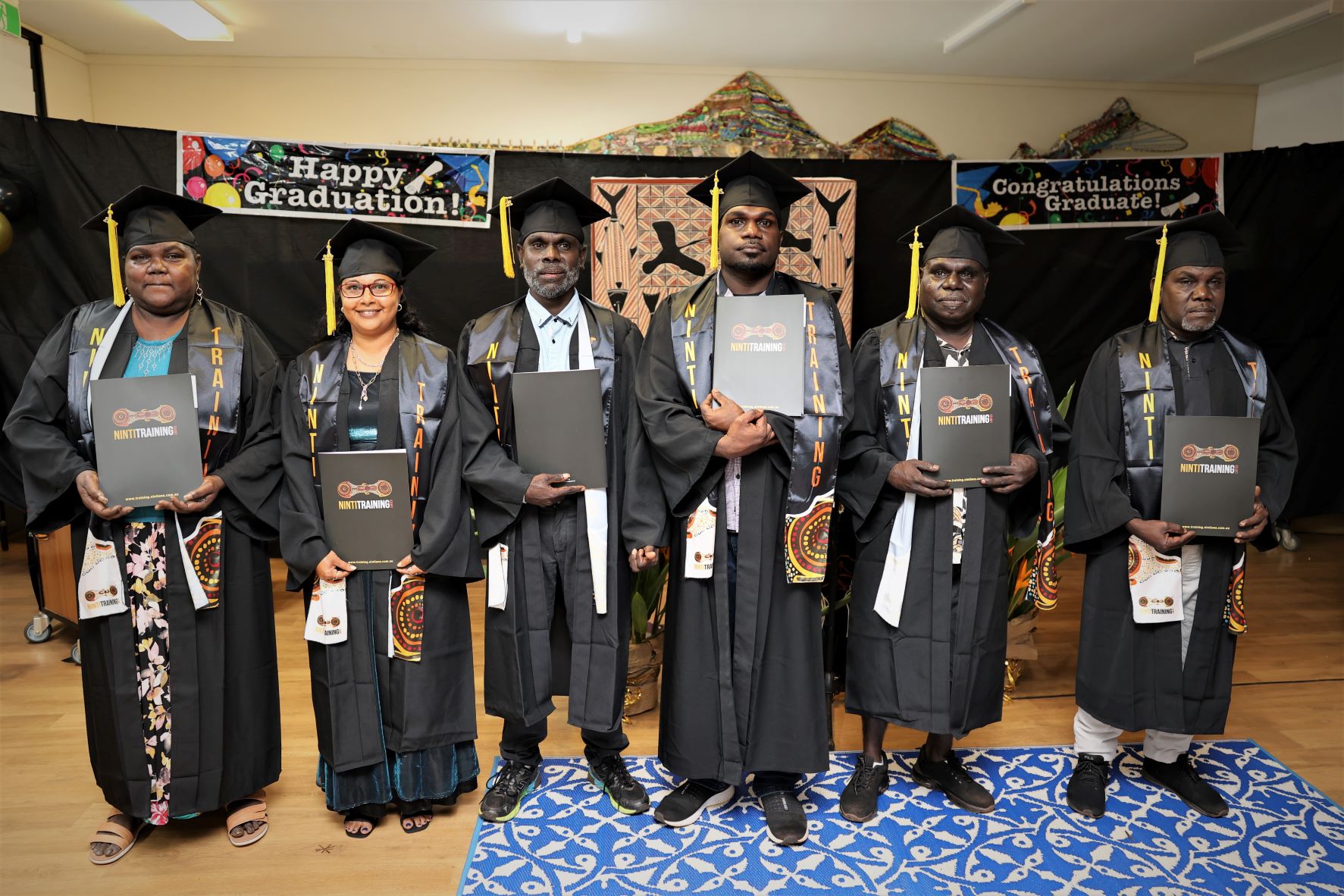Indigenous health advocates hope that the launch of a new, dedicated First Nations health journal will help Close the Gap, while in a small town in the Northern Territory, six students have made local history by graduating with qualifications in Aboriginal Primary Health Care.
Six students have graduated from the Mala’la Health Service Aboriginal Corporation, in a town in Arnhem Land, with a Certificate II in Aboriginal Primary Health Care.
They become the first graduates to achieve nationally recognised health qualifications on-country in Maningrida.

The Maningrida Health Service, formerly under Northern Territory Government control, transitioned to Aboriginal community control in 2021.
Seide Ramadani, Training Coordinator at Mala’la Health, is overjoyed at what the graduates have achieved, after identifying they had a shortage of qualified Aboriginal health workers.
“Mala’la looked at local workforce development and professional learning pathways,” Ms Ramadani said.
“We created a place-based training model to support adult learner engagement and retention, and increase likelihood of course completion,” she said.
Mala’la Health partnered with the Northern Territory Primary Health Network and Ninti Training to tailor and deliver the course.
Among the six students to graduate earlier this month were Natasha Bond and Jermaine Namanurki, who both received Student-of-the-Year awards.
“I’ve got so many choices of pathways to choose from, and I’m just so excited about it,” Ms Bond said.
“It was important to show that it doesn’t matter who you are, where you’re from, anything is possible.”

One significant benefit of training on-country was real-time translation, both literally (the graduates speak seven languages between them) and culturally.
“It’s important to know about this stuff so that we can encourage our families and friends to not be afraid about coming into the clinic,” Mr Namanurki said.
“That’s the reason that we went forward for this course,” he said.
Mr Namanurki plans to continue studies and become a fully qualified health care professional.

Aboriginal Workforce Coordinator at Mala’la Health, James Woods, has been a part of the generational chain of mentors leading to these promising changes in Indigenous-led health.
“This was the model – breaking the gap in communication,” Mr Woods said. “Getting back to that on-the-job training that was gone over the decades. The [graduates] understand the Western medical terminology and they take it to the community.”
According to a national health profile study, although there has been growth in the number of Indigenous health workers, the growth is not commensurate with Aboriginal and Torres Strait Islander population growth.
“It’s a journey, and our graduates have paved for others to follow as well, now,” Ms Ramadani said.
Indigenous health “renaissance”
Meanwhile, half a country away in Melbourne, the Lowitja Institute, Australia’s first community-controlled Indigenous research institute, has created a new, international, inter- and multidisciplinary peer-reviewed, open-access journal dedicated to collecting and expanding access to First Nations research.
First Nations Health and Wellbeing — The Lowitja Journal will focus on primary research articles, systematic reviews and informed short reports on all aspects of science, culture, philosophy and practice surrounding health and wellbeing for First Nation people and communities.
Professor Catherine Chamberlain is the editor-in-chief of the journal, which is based in Melbourne.

She told InSight+ that the journal’s goal is to provide good quality evidence that can inform effective policies and programs to improve health outcomes for First Nations people.
“That is how we improve health outcomes,” Professor Chamberlain said.
“The journal is going to provide authentic Indigenous evidence – about us, and for us.” All articles published in the journal must contain substantive contributions from First Nations authors.
Chamberlain said that while the journal’s key focus was aligned with Closing the Gap, it would also collect crucial and overlooked cultural knowledge underpinning generations of Indigenous good health and wellbeing.
“Prior to colonisation, Aboriginal Torres Strait Islander people were healthier than non-Indigenous people,” Professor Chamberlain said.
“[We had] a thriving spiritual culture for over 2000 generations. With colonisation, everything changed.
“But that state of wellbeing wasn’t achieved by accident. We’ve had sophisticated understandings of what it takes to achieve social and emotional wellbeing.
“We’ve dealt with devastation before. We’ve lived through ice ages. The purpose of the journal is to support an Indigenous [health] renaissance.
“All the ‘knowledge’ about indigenous people was generated by non-Indigenous researchers, and it’s underpinned by assumptions, superiority and racism that has informed our health programs and policies. So, this journal is really important.”
Medical Journal of Australia editor-in-chief, Professor Virginia Barbour, has warmly welcomed the new journal.
“First Nations Health and Wellbeing is an important initiative to address and highlight the specific health issues that Indigenous Australians face,” Professor Barbour said.
“At the Medical Journal of Australia, we are committed to publishing on Indigenous health issues.
“I very much welcome this journal and its First Nations leadership and would be keen to collaborate with Professor Chamberlain and her colleagues as the journal develops.”
The Lowitja Journal was developed in partnership with Elsevier and the Coalition of the Peaks, and will consider research articles on any topics relating to First Nations health and wellbeing.
Submissions are currently open and free until December 2023.
The journal will officially launch at the 3rd International Indigenous Health and Wellbeing Conference, being held from 14 to 16 June 2023, in Cairns, Queensland.
Subscribe to the free InSight+ weekly newsletter here. It is available to all readers, not just registered medical practitioners.

 more_vert
more_vert